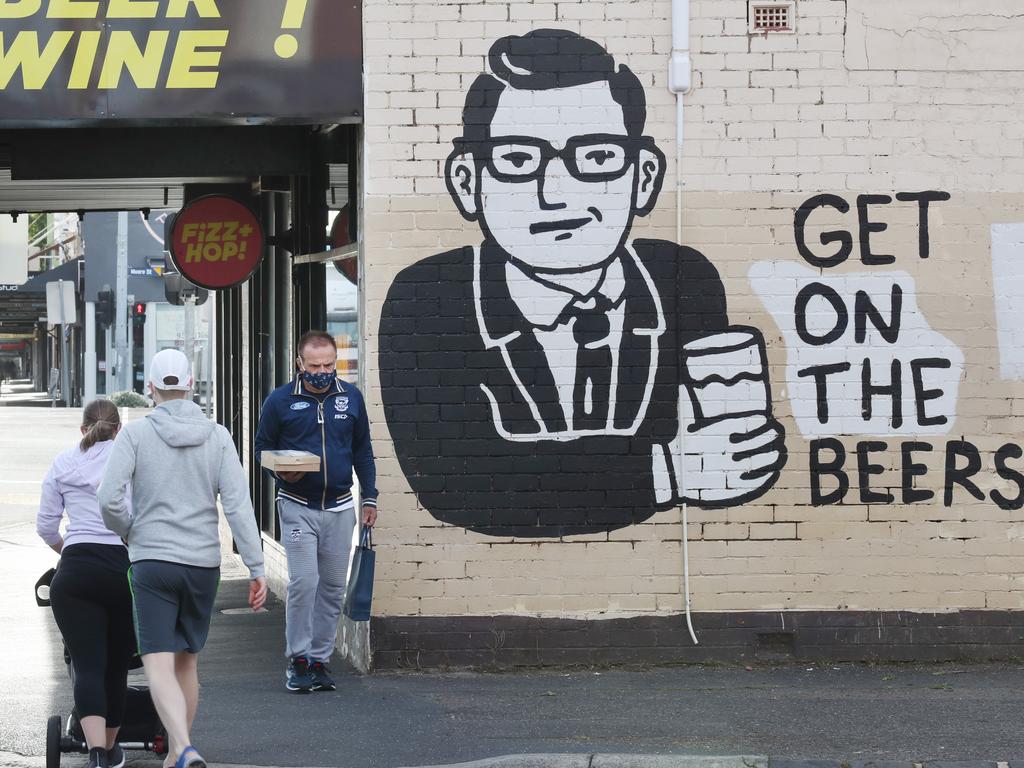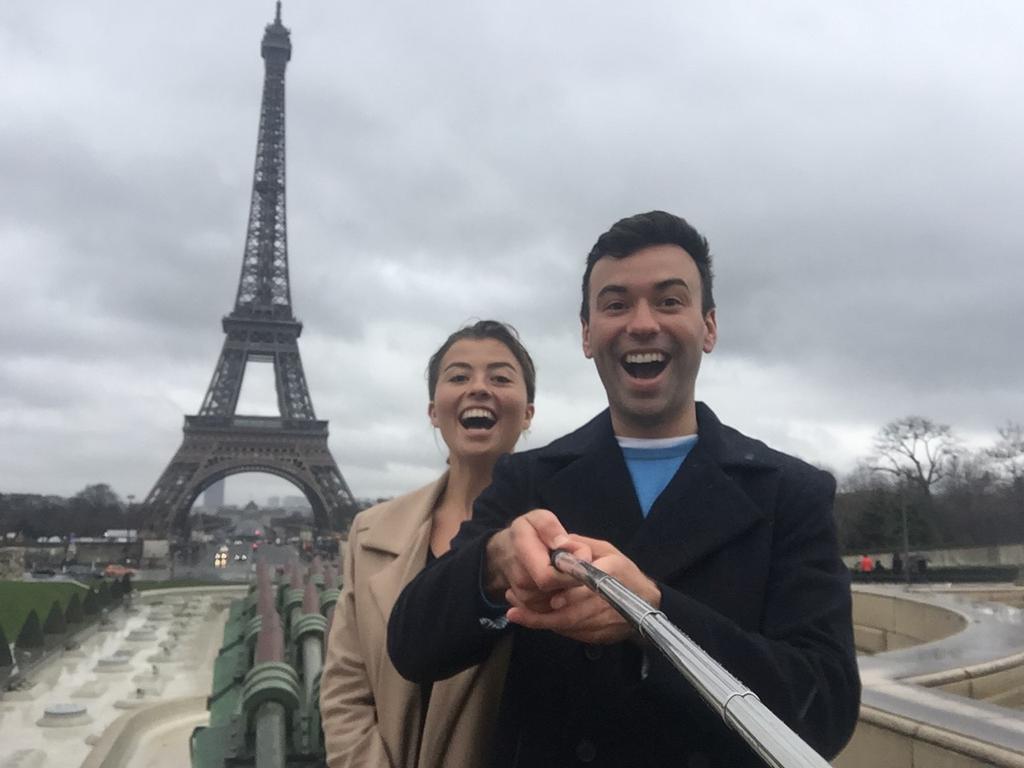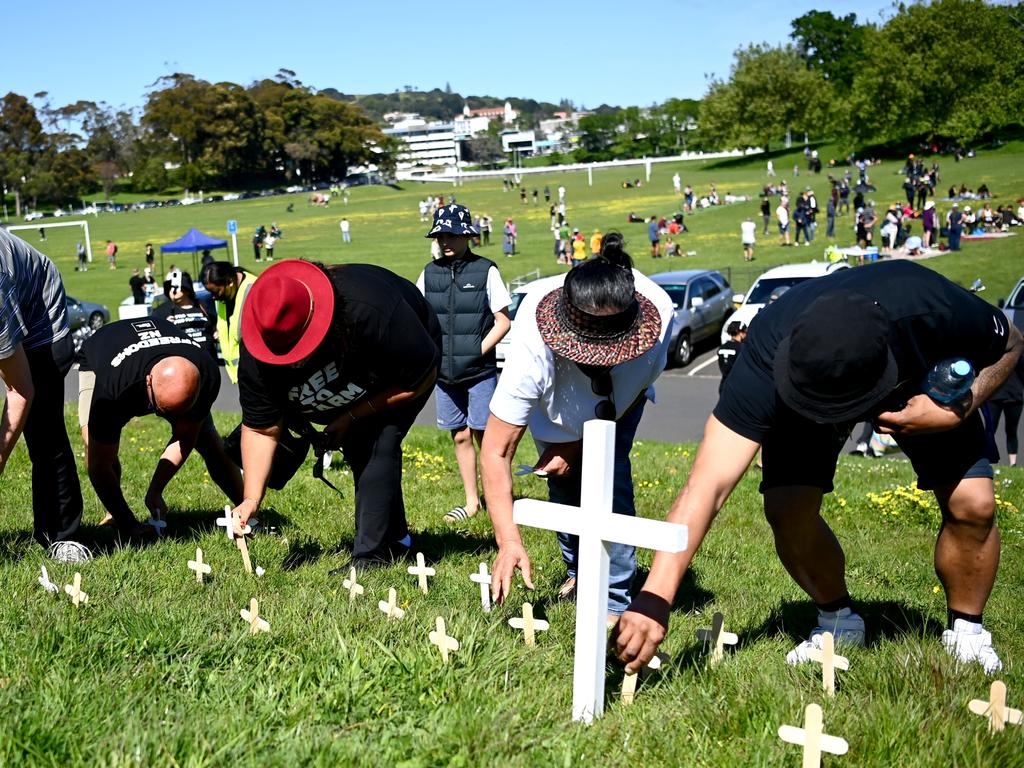Sprint is on to close gap after Covid cyclone
As we begin to open up, the race is on to protect Indigenous communities lulled into complacency by lockdowns and vulnerable to bureaucracy and the spread of dangerous ideas.
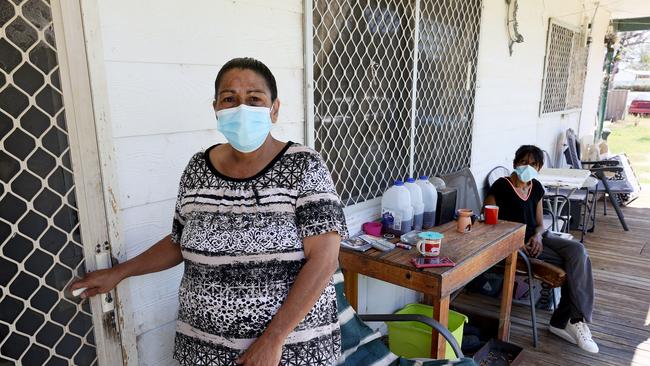
Wilcannia became an emblem of Covid-19’s nasty streak, when the Delta strain steamrolled through the remote, mainly Indigenous town in the dust-red NSW far west in August and September. Infections reached 152, or between one-quarter and one-fifth of residents, most of whom were living in overcrowded public housing.
Delta hit Wilcannia like a cyclone, as some locals described the outbreak when Inquirer visited last month, but it did not surprise Pat Turner, chief executive of the National Aboriginal Community Controlled Health Organisation. More than a year earlier, Turner’s organisation told a parliamentary committee Wilcannia was a sitting duck. If Covid-19 hit the town, “it would be impossible to contain due to overcrowding, poor sanitation and a lack of resources needed to quarantine properly,” NACCHO said in a submission in July last year.
On Thursday, Turner, who is also lead convener of the Coalition of Peaks, told the Senate’s Covid-19 committee the “rapid spread of Delta has been entirely predictable”. “Despite repeated calls for appropriate accommodation, the residents of Wilcannia were left to isolate in tents during the first weeks of the outbreak,” she said.
As Wilcannia’s cases escalated, authorities threw everything they could muster at a response – including the Australian Medical Assistance Team, a crack team of emergency disaster responders, the Royal Flying Doctor Service, state services, and volunteers – while community leaders stepped up to distribute food, persuade family and friends to get vaccinated, and sort out living arrangements.
The good news today is there isn’t a single active case in Wilcannia and there hasn’t been a new infection in 16 days. Thirty motor homes set up on the banks of the mighty Darling in Victory Park for quarantine – only six were eventually occupied – are being moved to Wentworth and Dubbo.
Lessons from western and far western NSW were up for discussion on Friday by the bureaucrats, clinicians and Indigenous leaders who make up the 33-member Aboriginal and Torres Strait Islander Advisory Group on Covid-19.
Lieutenant General John Frewen, co-ordinator general of Operation Covid Shield, the national vaccine taskforce, told Inquirer the lessons from Wilcannia were valuable but it was important to maintain perspective: “The wrong lesson from Wilcannia is that you can follow that approach every time. You never waste a crisis, and often it takes a crisis to get things done.”
Unsurprisingly, vaccination rates in Wilcannia have escalated. In the Far West and Orana area, which takes in Broken Hill, Dubbo, Bourke and Walgett, the first dose rate is now 93 per cent, 77 per cent for two doses; for the 15,000-strong Indigenous population aged over 15, the rates were 77 per cent and 63 per cent, respectively.
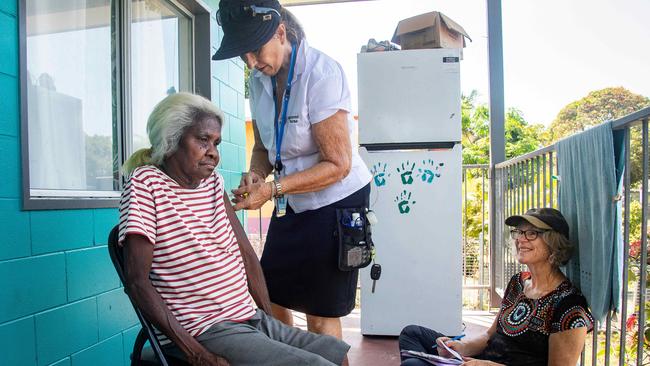
Those numbers, however, understate the chasm in coverage between Indigenous and non-Indigenous Australians. As of late this week, 57.5 per cent of Indigenous Australian aged over 15 had received a first dose and 42.3 per cent were fully vaccinated; the national headline rates are 83.6 per cent and 65.4 per cent, respectively.
Those are damning numbers, given Indigenous people were in priority groups 1b (for over-55s) and 2a, ahead of the general population, with the commonwealth responsible for their jabs. Remote and very remote communities have very low rates of inoculation. In the Pilbara, only one in three have had a first dose and one in five are fully vaccinated; the Northern Territory’s Tiwi Islands and West Arnhem have similar rates. In far north Queensland, a choppy boat ride to Papua New Guinea, coverage is below 50 per cent for first doses and one-third for full vaccination.
There are several reasons for the vaccination lag, some of which should have been anticipated, while others are due to bad luck, the quirk of regulations and the mistrust of government and mainstream health services. One official said with only 153 Indigenous people being infected until mid-June, a case rate six times lower than the general population, that success caused a “negative externality” in today’s low coverage rates.
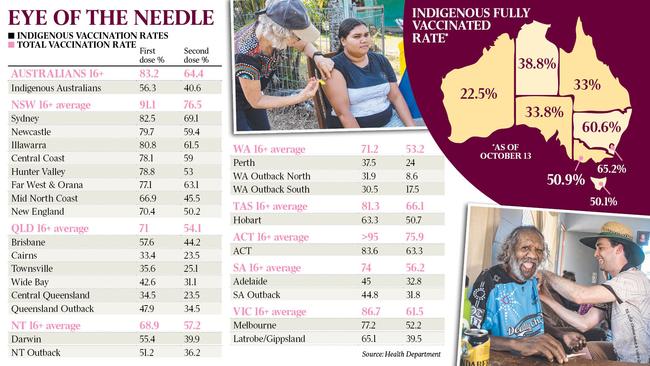
According to NACCHO, since the outbreak in Walgett Indigenous infections have jumped to over 4500, with 500 people hospitalised and 10 people dying, most of whom have been aged under 60. Delta is infecting Aboriginal and Torres Strait Islanders at twice the rate of non-Indigenous Australians.
Turner also believes the full lockdown of remote Indigenous communities during the first wave of the pandemic last year was “too successful”, with many people thinking the virus would never reach them. But that approach would not work once borders were opened, she told the committee, citing ANU research showing 60 per cent of First Nations adults have at least one risk factor for severe Covid-19 illness. Plus, like all Australians, Indigenous people are over lockdowns.
Senior federal health official Lucas de Toca, co-chair of the Indigenous advisory group on Covid-19, told the committee Indigenous vaccination rates were tracking in line with the general population until the fateful call in early April by the Australian Technical Advisory Group on Immunisation on the use of AstraZeneca, after very rare cases of blood clotting. ATAGI’s advice to use Pfizer for under-50s had a devastating effect on the rollout, which was centred on delivering the locally made AZ vaccine via 167 Aboriginal Community Controlled Health Services. The average age of an Indigenous Australian is 23, with 80 per cent aged under 50.
Not only were supplies of Pfizer limited at the time, with a five-day post-thaw use-by date de Toca said it was not feasible to dispatch the mRNA vaccine to far-flung communities. He said the ATAGI advice meant the preferred delivery channel, which was primary care, did not have the vaccine “that was more appropriate for the immense majority of the population”.
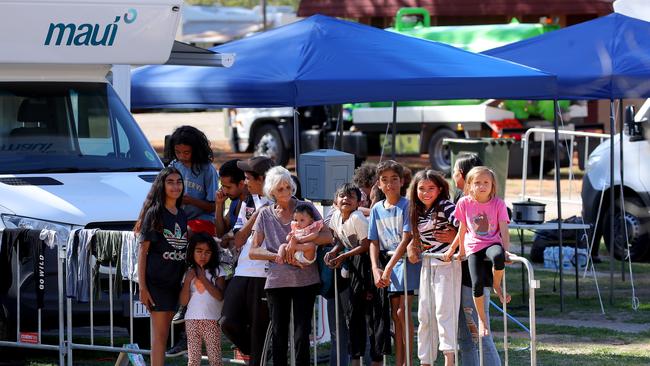
De Toca said once the TGA changed the product information statement for Pfizer in late May, allowing for thawed vaccine to be stored for 30 days, ACCHS were immediately supplied with the mRNA vaccine. The remote rollout in primary care was complemented with access to Pfizer via the RFDS, using fly-in clinics, extra workforce and mobile road clinics
De Toca said Indigenous people require very specific vaccination approaches – not a “one-size-fits-all” or blanket approach, but one focusing on local health leadership and a strong partnership between government and community and community organisations.
“That’s the only way to achieve the trust that will eventually allow that to happen,” de Toca said.
On Thursday, Frewen said the “vaccination of Aboriginal and Torres Strait Islander Australians is my No.1 priority”. Frewen told the Senate hearing that vaccine supply was not a concern in Indigenous communities. Rather, there were three distinct challenges: hesitancy, misinformation and complacency.
“In the misinformation space, there can be very pernicious information,” Frewen said. “It can be of a religious nature. It can be bringing into question whether the vaccines will have a detrimental effect to people’s reproductive systems. There are even stories going around that somehow vaccines can negate people’s Indigeneity.”
Turner said NACCHO’s members and state peak bodies had been working hard to combat misinformation and vaccine hesitancy, including in religious communities.
“We are combating multiple false ideas, such as that Covid-19 is a white man’s disease or that the government is using Aboriginal people and Torres Strait Islander people as guinea pigs,” she said.
“And there is very disturbing targeted misinformation from religious groups, emanating from the United States and spread by local people in Australia – white people getting into Aboriginal communities. It should be acknowledged that many of these false ideas have their origins in years of mistreatment of Aboriginal people by governments and medical research institutions.”
Most agree the way to overcome hesitancy and misinformation is via the influence of elders and trusted medical people. As Letitia Hope, deputy chief executive of the National Indigenous Australians Agency, said on Thursday, while social media is an important tool, “so is what we would colloquially refer to as the message stick, which is mob talking to mob, people talking to people, and having conversations around that”.
“Those local approaches about making sure trusted people in the community have the right information and good information and can actually counteract some of those things is important, and it’s part of the strategy that we’re working through at that local level. To say there is uniquely one communication channel is too crude an analysis. There are multiple factors,” Hope said.
“We’re working really closely with local communities to understand what it is in a local community. Is it that a local leader has come out very strongly against vaccinating? We would then have a conversation with that local leader to find out what’s driving their thinking and how we can remediate that process.”
Some ways to overcome complacency, such as access to overseas travel and nightclubs in the cities or to work in construction, won’t apply in these communities. As in the rest of Australia, Delta has been the best accelerant for vaccination.
The western NSW outbreaks brought a marked change to the rollout. In mid-September, Health Minister Greg Hunt announced an acceleration in the vaccination program in 30 local government areas across the nation (excluding Victoria). The LGAs were chosen because vaccination rates were low and they contained sizeable Indigenous populations.
Frewen said “the surge” was getting results. He pointed to a recent kick up in numbers, with daily Indigenous first-dose vaccination rates over the past four days surpassing the general population, which is getting close to saturation levels in NSW, ACT and Victoria.
Yet analysis by Inquirer shows Indigenous vaccination coverage in those 30 LGAs has risen by 10 percentage points for first and second doses since the program was cranked up; over that time, the average for all of Australia has gone up by 13 percentage points (first dose) and almost 20 percentage points (second dose).
“We are delivering vaccination clinics, activating community engagement teams, increasing communications, supporting ACCHS and boosting workforce. While we have seen progress in each of these areas, a significant challenge remains to close the gap,” Frewen said, vowing to hit 80 per cent first dose coverage for Indigenous people by Christmas.
NACCHO’s medical adviser Jason Agostino is a GP and epidemiologist who does clinical work at Gurriny Yealamucka, an ACCHS in Yarrabah in far north Queensland. Because of restrictions on travel and on outsiders, he hasn’t been able to work in the community of 2500 people, a 40-minute drive from Cairns.
As Michael McKenna and Lydia Lynch reported last week, only 32 per cent of people in Yarrabah have had at least one jab, with 18 per cent fully vaccinated. On the tip of Cape York, Mapoon has only 22.6 per cent first-dose coverage and 16.3 per cent fully vaccinated. This week, after ACCHS doctors and nurses spent three days knocking on doors and dispensing the vaccine, Yarrabah rates jumped to 50 per cent for first doses and possibly 30 per cent for second doses.
Agostino told Inquirer this crucial vaccination phase was labour-intensive and costly but essential to get vaccination rates up, especially with pressure building to open borders while living with the virus.
“The main thing we need now is long-term workforce solutions,” he said, pointing out many locums were working in state-run vaccination and testing centres.
While Turner welcomed the surge, she argued more needs to be done by states and the NT to organise contingency plans for Indigenous communities in the event of an outbreak. There are many potential Wilcannias, including Yarrabah, which NACCHO also warned about more than a year ago, so she is pushing for a 100 per cent vaccination rate in Indigenous communities before the nation opens up to travel and as quarantine ends in NSW next month.
“Everyone waited until Covid hit western NSW and then they panicked,” Turner said on Thursday. “We’ve highlighted all these issues. It’s not as though the states or territories don’t know about this. They all know about it. I’m concerned that I have not seen one contingency plan yet from any jurisdiction around Australia.”


